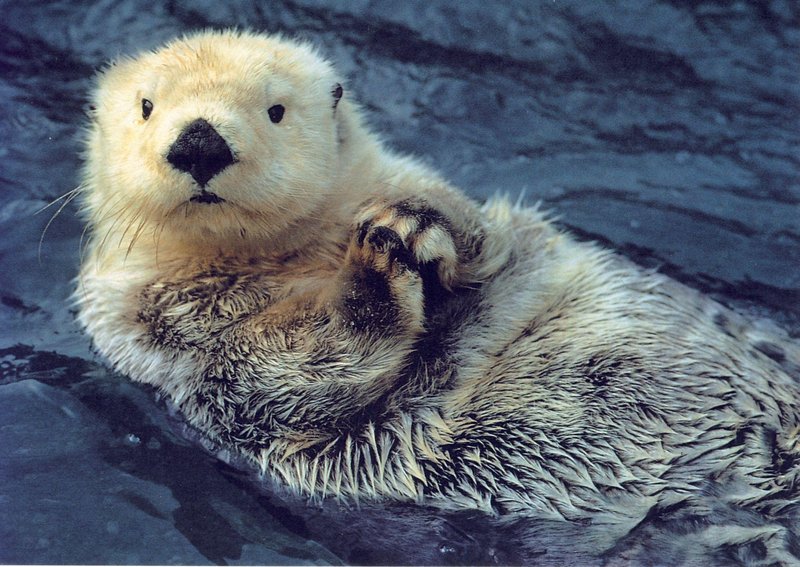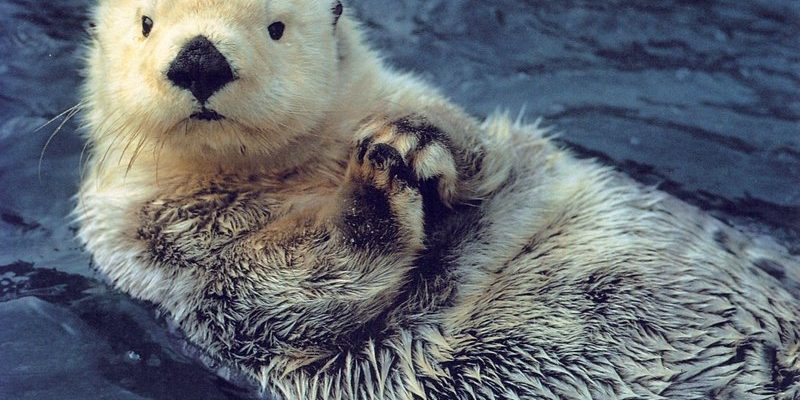
Picture this: the sea otter floats on its back, cracking open shellfish using rocks while effortlessly paddling through the waves. They’re not just cute; they play a vital role in their ecosystems as well. By managing sea urchin populations, sea otters help maintain the health of kelp forests, which are crucial habitats for many other marine species. However, the balance of their world is at risk. Let’s take a closer look at the factors contributing to their endangered status and what steps we can take to help.
What Makes Sea Otters Special?
Sea otters are more than just adorable animals; they are part of a critical ecological balance. These marine mammals are found along the coasts of the Pacific Ocean, from Alaska down to California. Known for their dense fur—one of the thickest in the animal kingdom—sea otters have about a million hair follicles per square inch! This keeps them warm in cold waters.
Beyond their cuteness, sea otters have a significant role in their habitat. They’re considered a keystone species. This means that their presence or absence greatly impacts the ecosystem. For instance, when sea otters thrive, they keep sea urchin populations in check. Too many sea urchins can devastate kelp forests, which are essential for many marine species.
Their eating habits are also fascinating. Sea otters have a high metabolism and need to eat roughly 25% of their body weight daily. That’s a lot of seafood! They primarily feed on invertebrates like clams, crabs, and other shellfish. Their hunting not only supports their health but also helps maintain the ecological balance. Without them, marine life would face disruption.
Why Are Sea Otters Endangered?
You might be wondering, with all that charm and ecological importance, why are sea otters facing danger? Unfortunately, these adorable marine mammals are not immune to threats. The biggest challenges they face include habitat loss, pollution, climate change, and hunting.
One of the primary reasons for their decline is oil spills. When oil spills occur, they coat sea otters’ fur, reducing its insulating properties. This can lead to hypothermia, damaging health or even death. Additionally, oil spills can harm the food sources sea otters rely on, disrupting their ability to thrive.
Another issue is fishing practices that unintentionally catch sea otters in fishing gear. This bycatch can lead to injuries or death. And let’s not forget about pollution. Chemicals and waste entering the ocean can contaminate the waters and the food they consume, leading to health problems.
The Status of Sea Otters Today
As of now, sea otters are classified as threatened under the U.S. Endangered Species Act. The populations were decimated in the 1800s due to the fur trade, dropping to just a few thousand. Thanks to conservation efforts, they’ve made a comeback in certain areas, particularly along the California coast where their populations have stabilized and even increased.
However, they still face local extinctions. For example, in certain regions of Alaska, sea otter numbers have dropped dramatically. This inconsistency highlights the importance of ongoing conservation efforts and further research to address the root causes of their decline.
Awareness about sea otters and their plight is growing. Many organizations are dedicated to protecting their habitats and educating the public about the importance of these creatures. But there’s still much work to be done, and advocacy plays a crucial role.
Conservation Efforts and Success Stories
So, what is being done to ensure the future of sea otters? Numerous conservation programs are underway, focusing on habitat restoration, research, and public education. In California, organizations like the Monterey Bay Aquarium focus on rescuing injured sea otters and finding ways to rehabilitate them.
Another impressive success story comes from Alaska, where the U.S. Fish and Wildlife Service works to monitor and protect sea otter populations through various initiatives. These include research on the otters’ health and their impact on local ecosystems.
Community involvement is also essential in these conservation efforts. Local groups often host beach clean-ups to reduce pollution and improve habitats for sea otters and other wildlife. When communities come together, they can make a significant difference in the preservation of these precious animals.
What Can You Do to Help?
Feeling inspired to jump in and help sea otters? You’re not alone! There are simple yet effective ways you can contribute to the protection of these marine mammals:
- Educate Yourself and Others: Share information about sea otters and their importance in ecosystems. Knowledge is powerful!
- Support Conservation Organizations: Consider donating to or volunteering with groups focused on marine conservation, such as the Sea Otter Conservation Network or the Monterey Bay Aquarium.
- Reduce Plastic Use: Remember, plastic pollution can harm marine life. Use reusable bags and containers to minimize waste.
- Participate in Clean-Ups: Join local beach clean-up efforts to remove debris and pollutants from natural habitats.
Taking these small steps can lead to a more significant impact on the fight for sea otters’ survival.
The Future of Sea Otters
The future of sea otters is still being written, and while challenges remain, there’s hope. Conservation efforts, community involvement, and public awareness are all key elements in ensuring these animals continue to thrive. The more we understand about their role in the ecosystem, the better equipped we are to protect them.
In many ways, sea otters symbolize our connection to the ocean. Their playful nature and ecological significance remind us not to take our marine environments for granted. Let’s work together to ensure that future generations can enjoy the sight of these furry beings floating gracefully in the waves.
In conclusion, sea otters are not just endangered animals; they are a vital part of our marine ecosystems. By supporting conservation efforts and educating others, we can help ensure they continue to thrive. Remember, every small effort counts, and together, we can make a significant difference for these remarkable creatures.

